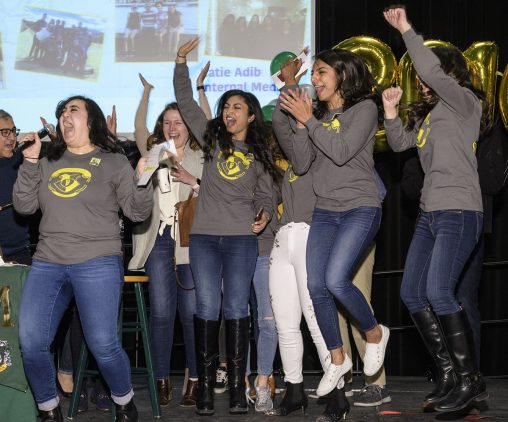One hundred twenty-two medical students of the Wright State University Boonshoft School of Medicine learned today where they will spend the next three to five years of their lives completing residency training after receiving their medical degrees in May. It is the Boonshoft School of Medicine’s largest class ever to match.
Because of coronavirus restrictions, the Boonshoft School of Medicine held a virtual celebration this year. Medical students gathered together online to celebrate and listen to remarks from Valerie Weber, dean of the Boonshoft School of Medicine, and Gary LeRoy, associate dean of student affairs and admissions.
Although the Boonshoft School of Medicine could not hold the traditional Match Day event on campus, many Wright State medical students were able to celebrate the moment when they learned where they will train with their family and loved ones, LeRoy said.
“This is what they have dreamt about for most of their adult lives,” he said.
A long-standing tradition at medical schools nationwide, Match Day is a highly anticipated occasion. It is the day that medical students learn where they are heading as new doctors to receive advanced clinical training in a residency program. This year, more than 42,000 applicants vied for residency positions at institutions nationwide.
Depending on where they match, students will spend the next three to five years as residents receiving advanced training in a primary care field or one of dozens of medical specialties.

At 122 students, this year’s class was the largest at the Boonshoft School of Medicine to match. (File photo from 2019)
Wright State students matched in outstanding programs in Dayton, throughout Ohio and across the country, including Case Western Reserve, Cleveland Clinic, Ohio State University, University of Cincinnati, Vanderbilt, Morehouse, University of Alabama at Birmingham, Loma Linda, LSU, University of North Carolina, University of Michigan, University of Washington, University of Minnesota, University of Pittsburgh and the University of Texas Southwest.
Fifteen graduates will complete their residencies at Wright State University.
Two medical students who are active-duty military members matched for competitive military residencies: one in pathology in the Army and the other for general surgery in the Air Force.
More than 41.6% of the Wright State graduates will remain in Ohio during residency, and 34% will remain in the Dayton region.
More than a third (37.5%) will enter a primary care field: Family Medicine: 17.5%; Internal Medicine: 9.2%; Pediatrics: 9.2%; and Combined Internal Medicine-Pediatrics (Med-Peds): 1.7%.
The rest of the graduates matched in 15 other specialties: Anesthesiology: 7.5%; Dermatology: 1.7%; Emergency Medicine: 16.7%; Neurology: 4.2%; Obstetrics and Gynecology: 5%; Ophthalmology: 1.7%; Orthopaedic Surgery: 4.2%; Otolaryngology: 0.8%; Pathology: 4.2%; Psychiatry: 8.3%; Radiology: 1.7 %; Radiation Oncology: 0.8%; Surgery: 3.3%; Transitional Year: 0.8%; and Plastic Surgery: 1.7%.
A complete list of all matches is available at medicine.wright.edu/match.

 Milling around
Milling around  Wright State recognizes Nursing Professor Kim Ringo for advancing international student success
Wright State recognizes Nursing Professor Kim Ringo for advancing international student success  Wright State honors graduating students for distinguished doctoral dissertations
Wright State honors graduating students for distinguished doctoral dissertations  Top 10 Newsroom videos of 2025
Top 10 Newsroom videos of 2025  Museum-quality replica of historic Hawthorn Hill donated to Wright State
Museum-quality replica of historic Hawthorn Hill donated to Wright State 